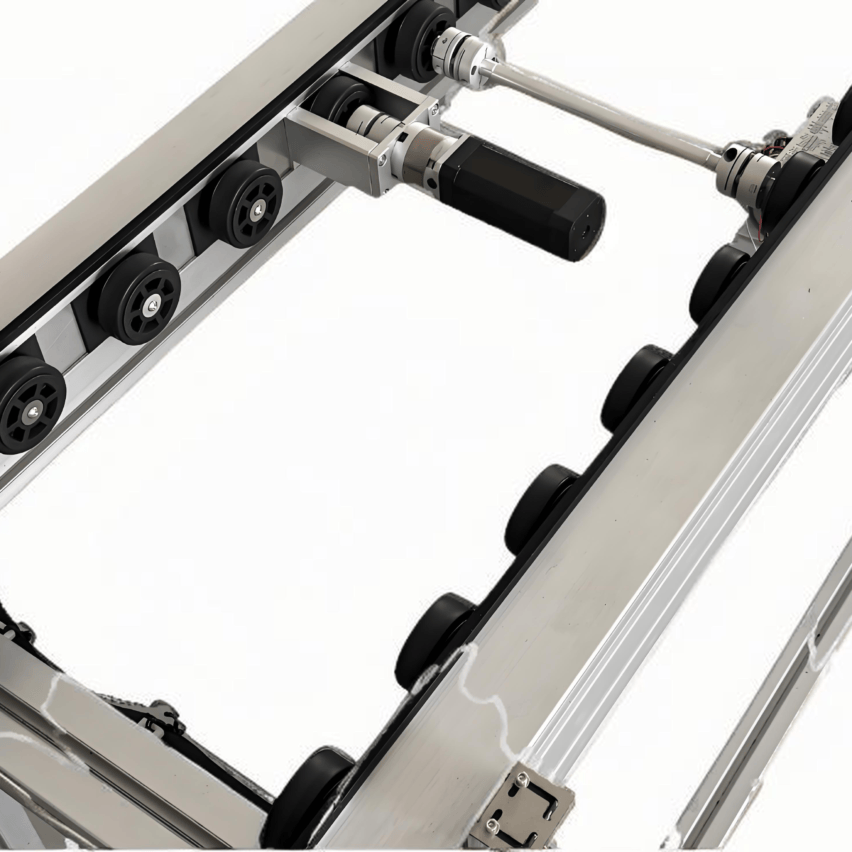In modern electronics manufacturing, a tiny resistor or chip offset 0.1mm, may lead to the scrap of the entire circuit board. Traditional conveying line due to mechanical friction and vibration, positioning error is often ± 0.1mm or more, seriously restricting the yield of mobile phones, tablet PCs and other 3C products. So, how to crack the magnetic levitation conveying line precision problems? The core lies inNon-contact operation, intelligent positioning systems and dynamic synchronised controlThree major innovations that push assembly precision from millimetres into the micron and even nanometre era.
High-precision positioning mechanisms: moving from physical contact to electromagnetic levitation
While conventional conveyor lines rely on gears or belts with mechanical gaps that lead to positional drift, magnetic levitation technology is used to achieve this byelectromagnetic induction principleZero contact operation is achieved. Motors move in suspension in the magnetic field, eliminating frictional interference:
- Fusion of laser ranging and electromagnetic induction: The track's built-in laser sensor measures distance in real time (with nanometre accuracy), and the electromagnetic coil feeds back position data, which is dynamically adjusted in conjunction with an algorithm.
- Repeatable positioning on the micrometre scaleThe accuracy of the system is stable within ±20μm, far exceeding the traditional error of ±0.1mm, ensuring accurate placement of electronic components.
Ask Yourself: Why Micron-Scale Precision is Crucial for Chip Assemblies
Self-answer: The chip circuit line width is only nanometre wide, and offset can lead to short circuit or functional failure; the precise positioning of magnetic levitation reduces the defective rate from 5% to 0.02%.
Elimination of mechanical interference: zero-friction operation guarantees stability
Mechanical vibration is an invisible killer of electronic assemblies. Magnetic levitation technology is used byContactless drive, eliminating interference at the source:
- Wear-free design: The actuator is suspended in the space of 0.1-10mm of the track, avoiding the contamination of metal chips and lubricant residue of the traditional chain.
- Vibration resistance: Electromagnetic fields buffer external shocks and reduce the risk of component deflection by 90% in the SMT placement chain.
Ask Yourself: Is Accuracy Sacrificed by High-Speed Operation?
Self-answer: On the contrary! Maglev acceleration up to 1G, speed 1m/s, accuracy inversion at high speeds, due to no inertial delay.
Intelligent synchronised control: AI-enabled multi-station collaboration
Electronic assembly requires multiple parts to be in place at the same time, and conventional systems are difficult to synchronise due to the accumulation of errors. Maglev'sMulti-sensor fusionAchieving dynamic synergies:
- Real-time data feedback: Dust particle counters and position sensors update data every 10 seconds and AI algorithms predict path deviations.
- Adaptive speed controlFor example, in the assembly of mobile phone motherboards, the system automatically adjusts the conveyor rhythm to match the beat of the bonder and welder, and the changeover time is reduced from 8 hours to 23 minutes.
| Parameter comparison | Conventional Conveyor Lines | Magnetic Levitation Conveyor Line | Enhancement |
|---|---|---|---|
| position accuracy | ±0.1mm | ±20μm | ↑80% |
| Failure rate (chipsets) | 5% | 0.02% | ↓99.6% |
| Retrofit time | 8 hours | 23 minutes. | ↓95% |
Application benefits: an efficiency revolution in electronics assembly
In 3C electronics factories, maglev technology has reshaped the logic of production:
- Case 1: Chip packaging line-Nanometer positioning ensures photolithography pattern alignment, reducing the defective rate from an industry average of 5% to 0.02%, saving 20 million RMB in annual costs.
- Case 2: Mobile phone chip production line--Multi-motor synchronised transport of micro-components, mounting speed from 8ppm to 40ppm, 5 times the capacity.
Ask yourself: How does flexible production fit into multiple products?
Self-answer: modular design supports software programming, a line compatible with mobile phones, tablets, medical equipment, change type only requires parameter adjustment.
I think the magnetic levitation technology is not only a tool upgrade, but also electronic manufacturing from "mechanical brute force" to "electromagnetic intelligence" paradigm leap - when the precision is no longer a bottleneck, but rather the innovative When precision is no longer a bottleneck, but a springboard for innovation, the micro-world of 3C electronics will be redefined.













